Newy Fagan: A Retrospective, a multimedia art exhibit at the Marion Cultural Alliance’s Brick City Center for the Arts from December 1st-30th will highlight a 50-year-plus artistic career. Taking center stage will be Fagan’s unique herd of kilnformed glass horses.
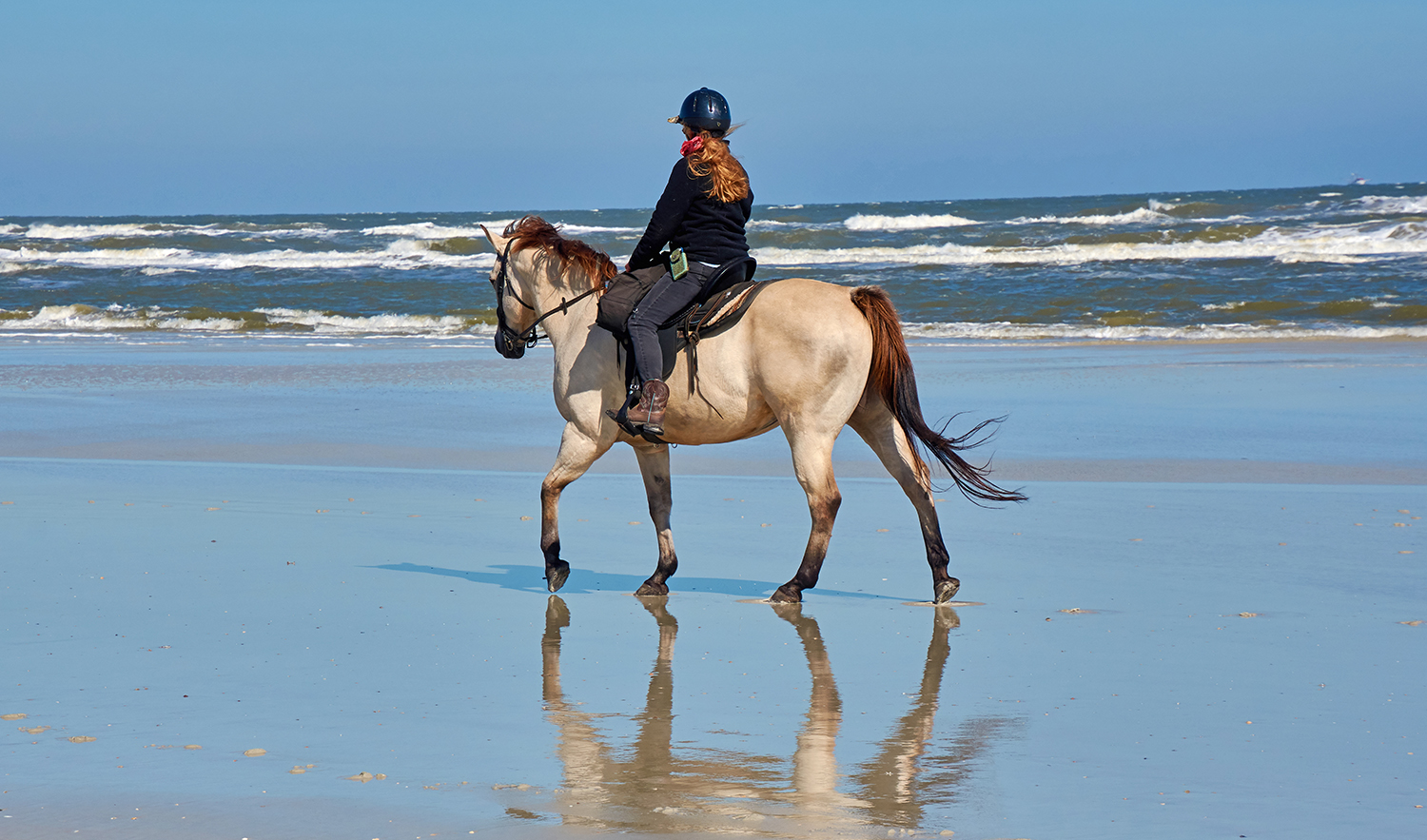
Newy Fagan ventured down the rabbit hole of art as a youngster, and, oh, what a magical journey it has been. Fueled by her love of horses, Fagan’s impressive portfolio includes oil/acrylic/pastel paintings, wood-cut prints, stained glass, clay sculptures and her signature kilnformed three-dimensional glass horses.
Fagan grew up in the idyllic setting of a 10-acre family farm in Connecticut, where she was christened with her unusual first name.
“I’m the third of six children, so when my mother was pregnant with me, my two older, but still young, siblings asked her what was happening,” shares Fagan. “My mother told them that she was having a new baby and then they started saying she was having a ‘newy.’ The name stuck, so when I was born, I was actually named Newy.”
Fagan’s childhood farm was also where she got her first pony and did her first drawings.
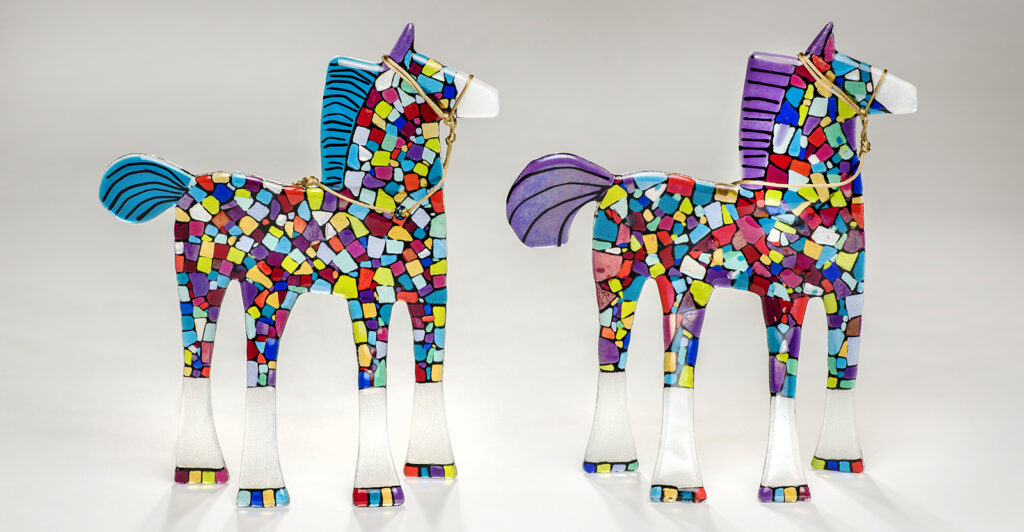 “I was maybe 5 when I got Bonnie, a Welsh pony, and then when I was 10, we got a horse named Black Beauty. Then, every few years, my father would buy me a new horse and I began showing in 4-H,” recalls Fagan. “Of course, horses were the first things that I drew as a child. The first horses I drew looked more like cats than horses, but I kept at it until my drawings did look like horses.”
“I was maybe 5 when I got Bonnie, a Welsh pony, and then when I was 10, we got a horse named Black Beauty. Then, every few years, my father would buy me a new horse and I began showing in 4-H,” recalls Fagan. “Of course, horses were the first things that I drew as a child. The first horses I drew looked more like cats than horses, but I kept at it until my drawings did look like horses.”
As a teenager, Fagan worked in an art supplies and frame shop in Clinton, Connecticut, known as an artsy town.
“I became friends with the artists who would come into the store, and I learned a lot from them,” says Fagan. “I also took lessons and learned how to paint objectively from still life. But horses were still my favorite subjects, and they are not still life. I could relate to them because they are creatures of motion and I always wanted to be in motion too.”
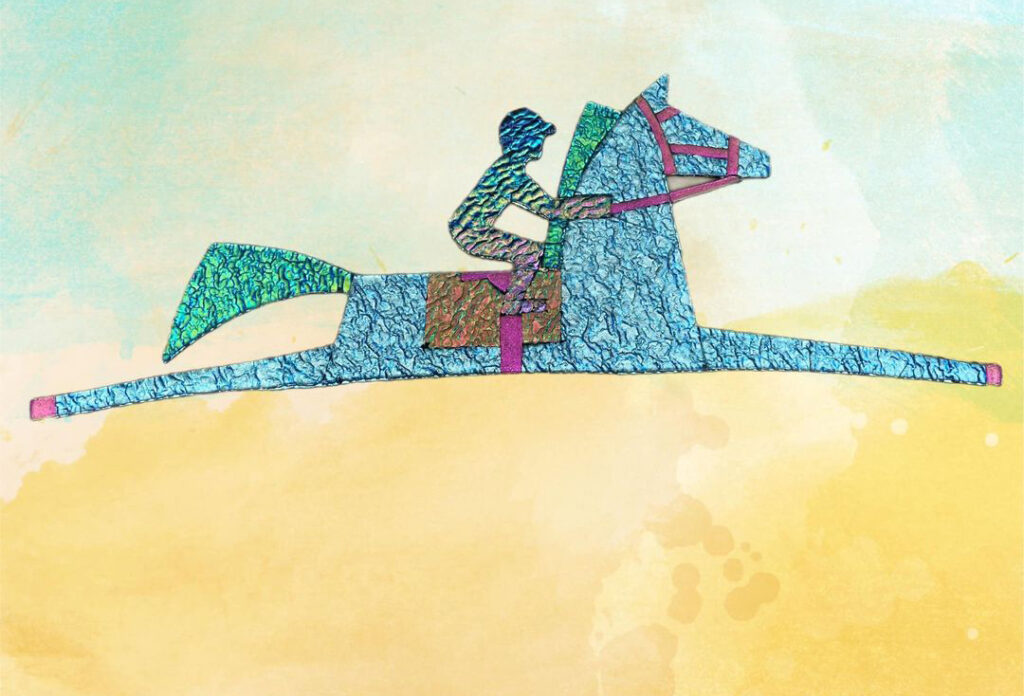 To afford her own art supplies and art lessons, Fagan gave art lessons and riding lessons to kids for 50 cents an hour.
To afford her own art supplies and art lessons, Fagan gave art lessons and riding lessons to kids for 50 cents an hour.
“I really enjoyed teaching and seeing the kids be excited either about art or horses, or, like me, both,” notes Fagan. “Teaching is fun when you teach what you love.”
Fagan followed through with her passions, studying fine arts and getting a bachelor’s degree in art education from Southern Connecticut State University in 1973. Horseless during her college years, her favorite subjects to paint became plants. After college, Fagan taught art in an elementary school for two years. But her need to be in motion and her artistic ambitions led her out of the classroom.
“As much as I loved teaching, I really wanted to live an artist’s life,” explains Fagan. “I went all in, painting as much as I could and participating in as many art shows as I could. It was at an art show that I met a stained glass artist and that set me on a whole new path.”
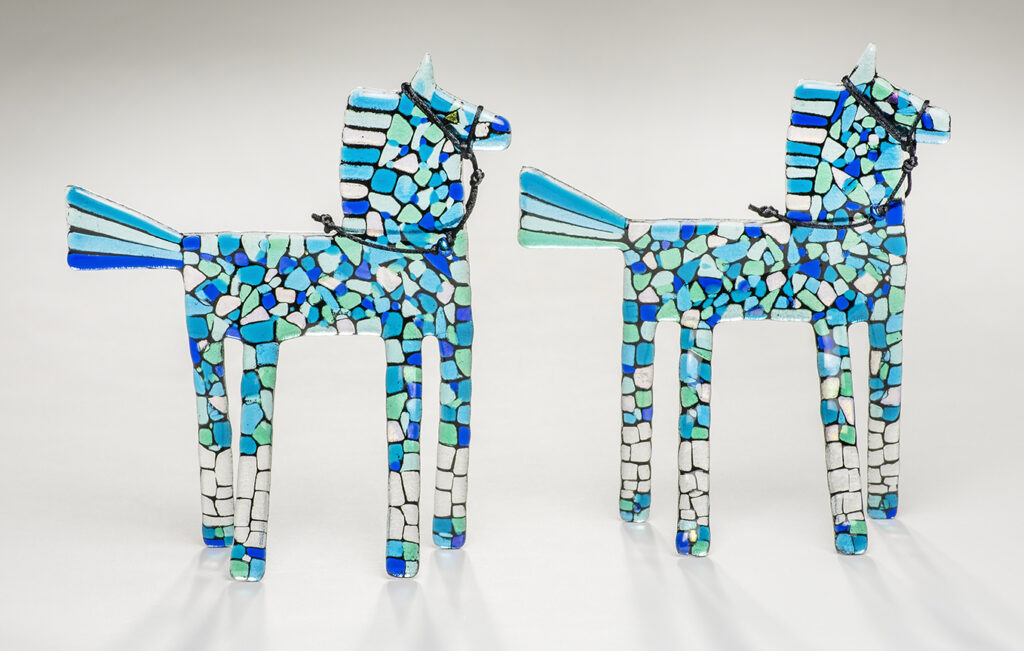 By the time Fagan moved to Florida in 1979, she was all-in on stained glass art.
By the time Fagan moved to Florida in 1979, she was all-in on stained glass art.
“I had heard that the Ocala area was known for its horse farms, so I came and looked around,” says Fagan. “I found a farm that I could afford in Moss Bluff, next to the Ocala National Forest, where I could trail ride. I bought a prefab building to set up as my art studio and a half-Arabian filly. I was living my dream life.”
HITTING THE BULL’S-EYE
At her Moss Bluff farm studio, Fagan continued with her stained glass art while giving lessons and traveling to continue her art education.
“I began to be interested in fusing, where glass can be melted down in a kiln and then re-shaped. This fascinated me,” recalls Fagan. “But that took a special glass, not the same glass used for stained glass, and a special kiln.”
Fagan found just what she needed in the Bullseye Glass Company, which made compatible glass for fusing and the special kiln.
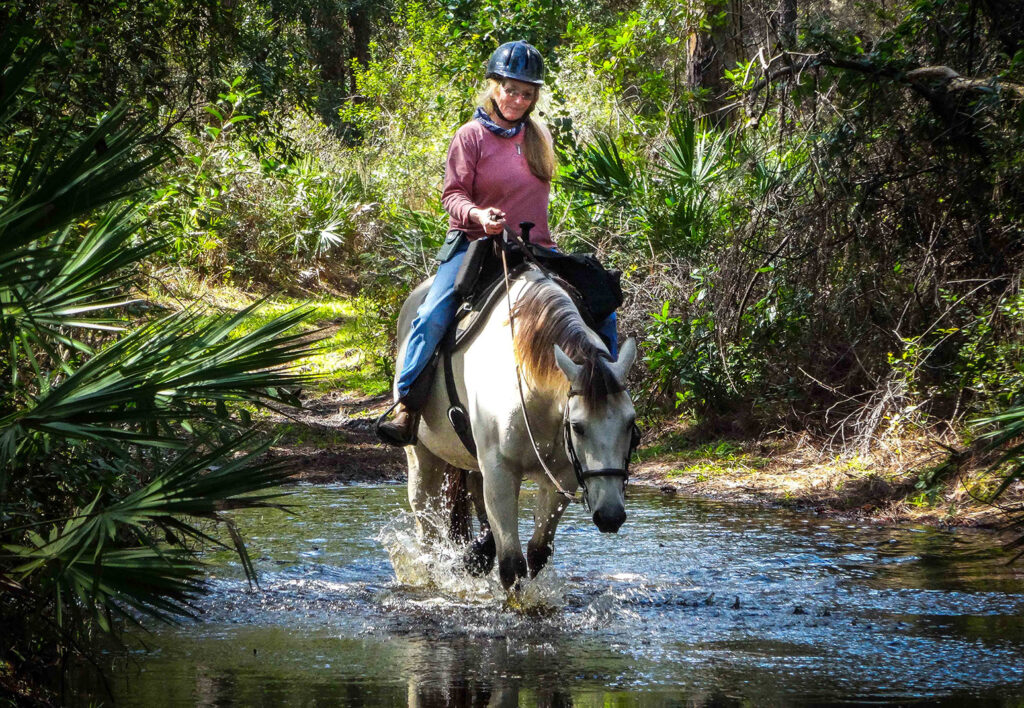
“Of course, I bought a special kiln, compatible glass and, just like that, I had a new artistic calling,” notes Fagan. “I began to focus on that and learning all that I could.”
Fagan’s quest for knowledge led her in the late 1980s to Camp Colton in Colton, Oregon, where the kilnformed glass process was being taught in two-week sessions.
“During one of the classes, the instructor would ask each of us two questions: ‘What was your problem? What do you want to do?’” explains Fagan. “My answer to both questions was that I wanted to make a kilnformed glass horse that could stand up. I had done plenty of flat horses in stained glass, but now I wanted to do three-dimensional horses. My instructor said that I could do it, but that it would be hard.”
Undeterred, Fagan began her journey to create her dream glass horses.
“It took me two years and 600 horses to figure out the right amount of time to leave them in the kiln, remove them, pull them upright, shape them and then put them in the cooling kiln,” admits Fagan. “I called those early horses my drunken sailors because I would get their bodies upright, but their legs would splay out.”
Now, Fagan has the creation of what has become her signature kilnformed glass horses down to, well, an art form. She places layers of multi-colored compatible glass onto a shelf in the kiln, where fusing happens at temperatures exceeding 1,450 degrees Fahrenheit. Once the glass melts together into one thickness, Fagan uses special gloves to remove the heated shelf with the flat fused horse and, in under 30 seconds, lift out two legs at a time with a spatula. The horse is then quickly shaped, uprighted onto four legs and transferred into the cooling kiln. The latter process can take up to eight hours.
The end results are whimsical horses in iridescent colors and markings not found in nature. But if a client wants a bay or a chestnut, Fagan can do that too. One of her horses, Medicine Man, a three-quarters Arabian black and white pinto, was the model for numerous glass horses.
“Since I had Arabian crosses, my original horses were modeled from that breed,” says Fagan, 72, who makes the horses in seven and nine inches, or taller for a custom order. “But soon I branched out to other breeds, like quarter horses, Clydesdales and Percherons. I also do custom horses and recently did a Morgan horse piece that I was very pleased with.”
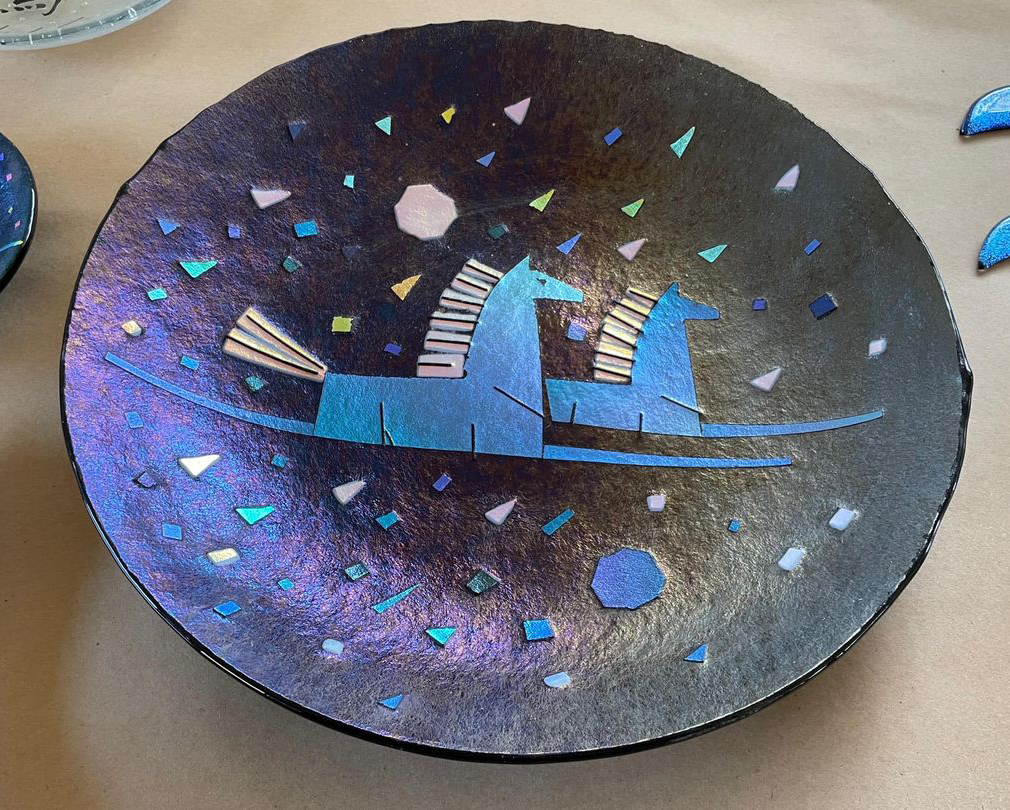
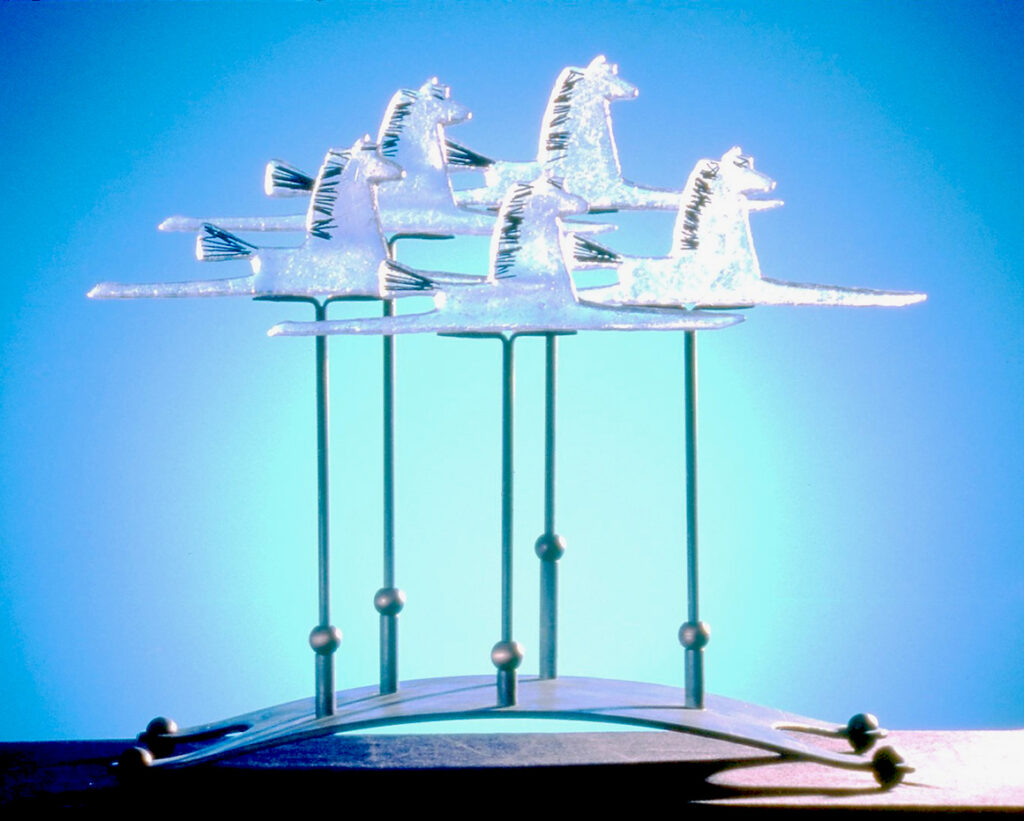
From that first kilnformed horse in 1987, Fagan has made more than 8,700 and counting in what she calls her Manipulated Horse Series. She also has another series called Migration, which features kilnformed glass horses in what she describes as “in full flight.” The horses’ streamlined legs are stretched out in front and back, and they are usually mounted on a stand alone or in a herd. The Migration horses, some with riders, are also featured on the panels of Fagan’s room dividers.
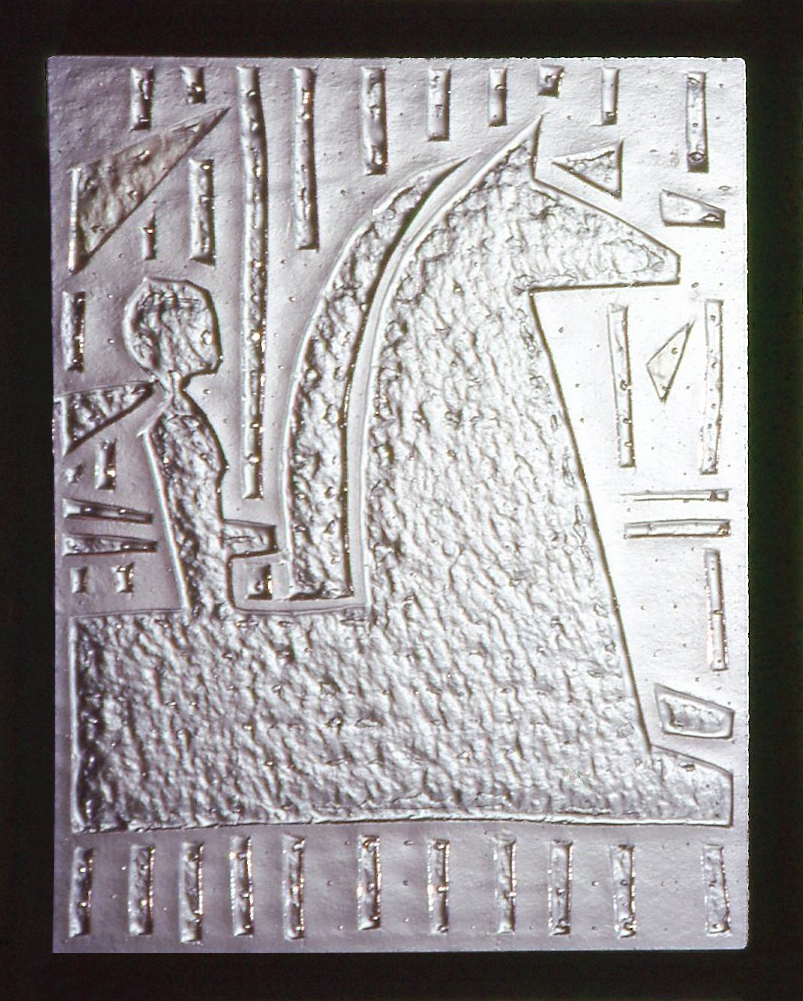
“I use horse imagery as a metaphor for freedom,” says Fagan. “To me, there is a spiritual connection between the horse and the human condition that is far older than the discovery of glass.”
After more than 50 years immersed in the artistic life, Fagan envisions new chapters.
“I have been so fortunate to have such a great life in art. I’ve traveled the country as an exhibitor and instructor. A definite highlight was having my own exhibit at the Appleton Museum of Art. I continue to be represented by outstanding galleries,” says Fagan gratefully. “Of course, I will keep creating my glass horses. But I also want to do more architectural fused-glass tiles. I’m also thinking of writing a book about glass fusion art. One of the things I love about art is that there is always something new to learn, explore and create.” OS
To learn more, go to newyfaganstudio.com
For information about the Marion Cultural Alliance, visit mcaocala.org






